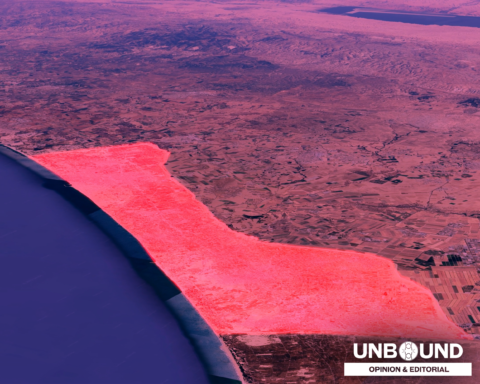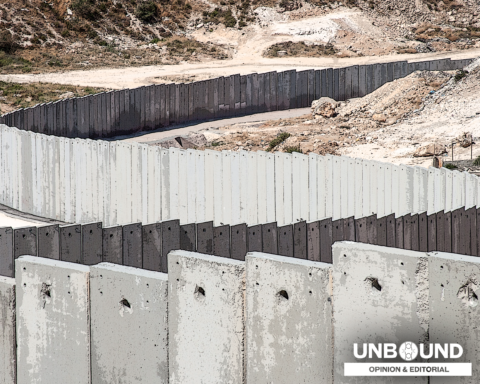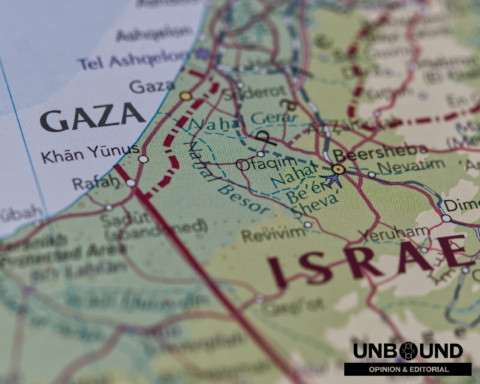Mosaic of Peace, Day 6
Today we were confronted with incompatible narratives.

Photo by Diane Fitch
After worshipping at Christmas Lutheran Church in the morning, we visited the Tent of Nations—a small olive tree-covered mountain owned by the Nassar family, which consists of Palestinian Christian farmers. The Nassars are a rare case—they have ownership papers going back to the Ottomans, and later filed with the British Mandate and Israeli government. Nevertheless, for more than 20 years they have been in a prolonged civil court battle to hold onto their land…to their minds, an isolated piece of property surrounded by constantly expanding Israeli settlements. The pressure being exerted on the Nassars to leave was most tangibly shown when over a hundred olive trees were bulldozed, presumably by settlers, at night. (They were later re-planted by international volunteers).
Amal & Daoud Nassar say that continuing within the legal process is the only option, however: leaving the family’s land would be unacceptable, and violent resistance equally so (as well as ineffective). “Violence just leads to more violence.” And so they have spent thousands of shekels on lawyers and court dates.
___________________________________________
The pressure being exerted on the Nassars to leave was most tangibly shown when over a hundred olive trees were bulldozed at night.
___________________________________________

Photo by Henry K. Stone
The farm itself is impressive work, with olive & date trees descending all across the slopes, furnished rooms hollowed out of natural caves, and pictures from the annual summer camp that the Nassars host for Palestinian children from the nearest villages. We heard how they work year-round, with olives, dates, apricots each having distinct harvesting and planting times. They collect their own water in the iconic water bins on the roof…they’re not connected to any external water pipes. Unlike many farms, they are energy neutral. The weather is beautiful, a few degrees cooler on top of the mountain.
In some ways, it feels like a country paradise. The resources of the Nassars are those of privileged land-ownership that contrasts with more common narratives about Palestinians. But right at the edge of the property, there is a reminder that they are under threat of being completely cut off: torn up earth and concrete chunks form a small barrier at the road’s entrance to the mountain farm.

Photo by Diane Fitch
When asked whether settlers’ children might attend the Nassar family’s camp, so that they might better understand their Palestinian neighbors, he firmly but patiently pushed back against the idea. His answer was (roughly) this:
The relationship simply is not equal between settlers and us. We can’t normalize oppression, which means we really can’t normalize relationships between the oppressor and the oppressed. It’s hard!
From Mr. Nassar’s perspective, Israeli pressure needs to be taken off of Palestinians before there can be real peace, even on this local level. In the meantime, his focus is on empowering Palestinian children, connecting them to the land, and holding onto that land.
Afterward, we visited the “settlement” village of Efrat—an Israeli town in Area C that has grown into a nearly self-sufficient city. It, too, didn’t fit my expectations.

Photo by Henry K. Stone
Efrat is, simply speaking, the most lush area we have seen thus far. It justifiably markets itself as a desirable location to fulfill Aliyah—the “ascent” into Israel. It is clear that water is in no short supply—and according to Ardie Geldman, the former city councilperson who greeted us warmly and welcomed into the local synagogue, neither is much of anything else. Efrat is, for all intents and purposes, as well-supplied and connected as an American city, and he would know—he moved here from Chicago. And although the nearest full hospital is 15 minutes away by car, outside the settlement, Ardie notes conspiratorially that in the middle of the night he made the trip in 12 just before his wife delivered their last child.
___________________________________________
Efrat is, for all intents and purposes, as well-supplied and connected as an American city.
___________________________________________

Photo by Diane Fitch
Ardie is affable, funny—he reminds me of any number of my friends’ Jewish parents growing up in Western NY. It’s easy to talk with him about the Cubs vs the White Sox (he lived on the north side of Chicago, while I went to school on the South Side). And his story is one that we would like all people to be able to have: a happy and fulfilling marriage; a faith journey that, after much exploration, lands in a stable and satisfying place; social and economic mobility. When Ardie invites us to come again and spend four days hosted in Efrat to really get to know its people and its day-to-day reality, it sounds like a heavenly opportunity.
Aspects of Ardie’s narrative for the settlement, though, come into conflict with what we’ve been seeing outside. He is very open and unapologetic about applying his Zionist beliefs to the issue of land in the West Bank:

Photo by Diane Fitch.
Disputed territory is NOT Palestinian until proven otherwise; the Jewish people have a sacred connection to the entirety of Israel (which includes all of stateless “Palestine” up through the Jordan River). “We” were stupid to ever offer the very generous two-state solutions that we have offered—and that “they” even more stupidly rejected.
All of this is relatively unsurprising; it’s natural that two groups of people who both believe that they have a claim to the land will view the legitimacy of their claims differently. What struck me, though, was other fundamentally different interpretations of the status quo:
-
- For Ardie, the Wall was a necessary and non-negotiable aspect of life that saved lives. (This is backed up by the end of truck-bombings and an overall reduction of terrorist attacks—though the argument can & has also been made to us that other IDF strategies, as well as a re-orientation of P.A. strategy, is the main driver behind these reductions).
-
- For the Nassars, the Wall was not just a barrier between states—it was a growing obstacle which one day might cut them off not only from Israel, but from other Palestinians in villages and even from the land which they have cultivated (with documentation since the early 1900s. (This is backed up by the path that the wall takes, and by planned extensions of it surrounding Bethlehem and in other locations).
-
- For Ardie, the solution seemed to be to “annex Area C entirely, and give the Palestinians citizenship within the area.” Equal rights within Israel was not an issue, because he believed that any (or at least the vast majority) of claims of unjust acts by the State were fabricated. In addition, he pointed out that “Palestinian” identity was an invention of the 1970s.
-
- For the Nassars, this seemed no guarantee of equality…they faced incredible difficulty in holding onto their land in the West Bank, and saw no reason to believe that there would be a difference if the land were part of Israel. In addition, they said they strongly identified as Palestinian even though, as Christians, they were religiously a tiny minority within that group—whatever the origin, that national identity was there.
I don’t have a solution to the twin (or numerous?) narratives of this land that we call Holy. But the disagreement on basic “facts”—and to me it seems this is real disagreement, not entirely political spin—is one of the major barriers to any sort of understanding between Israelis and Palestinians.
***
The Mosaic of Peace trip is part of the ministry of the Presbyterian Peace Program. It brings members and partners of the PC(USA) from a variety of backgrounds to Israel-Palestine in order to “experience this remarkable and troubled region, encounter its diverse people, explore its rich history and complex current situation, and engage with those who seek its peace.”
This blog entry was contributed by Henry Koenig Stone, as part of our effort to bring back and share the stories of Mosaic of Peace 2018. The full blog is co-hosted by Unbound and by the Presbyterian Peacemaking Program.





Unbound Social